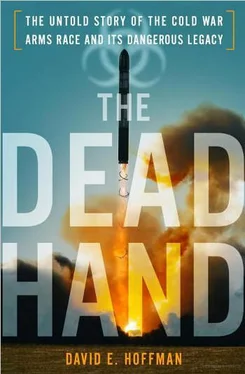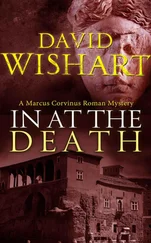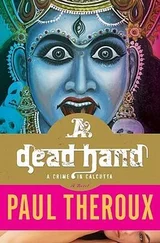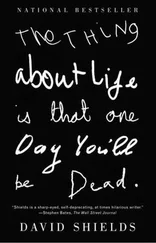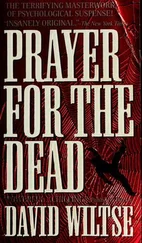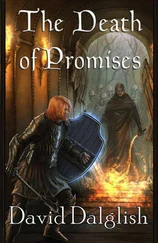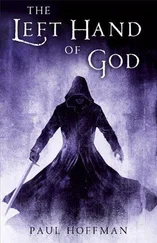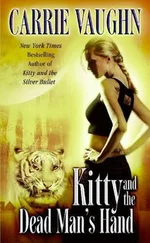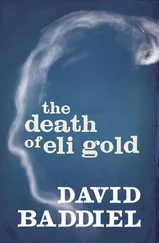Five years into his presidency, Reagan was still surrounded by intense feuds and conflicts among those who served him. Tempers were raw over a Soviet blunder in East Germany. On March 24, an American army officer, Major Arthur D. Nicholson Jr., was shot by a panicky Soviet sentry while in a restricted area. As with the Korean airliner, the clumsy Soviet response to the incident made it even worse. The shooting “has to be called murder,” Reagan wrote in his diary. 5
At a White House breakfast April 27, Reagan’s top cabinet members argued over whether to allow the secretary of commerce to visit Moscow on a trade mission. Casey and Weinberger were opposed. Shultz wanted to engage Moscow, and thought Reagan did too. “The scene was bizarre,” Shultz said. “Here was the president ready to lead the charge to engage with the Soviets. At the same time, his secretary of defense and director of central intelligence were leading their own charge in exactly the opposite direction.” 6Tired of the disputes, Shultz told Reagan he wanted to resign by summer. Reagan talked him out of it, saying he needed Shultz to deal with the Soviets. 7Reagan decided to let the trade mission go ahead, but sent a tough, private message to Gorbachev. 8
The Central Intelligence Agency devoted about 45 percent of its analytical manpower to the Soviet Union. 9But for all the attention to weapons and research programs, the agency had little understanding of the new man in the Kremlin. Shultz later recalled that “our knowledge of the Kremlin was thin, and the CIA, I found, was usually wrong about it.” 10Gates acknowledged that the CIA had scant inside knowledge. “We were embarrassingly hungry for details” from the British and Canadians who had met Gorbachev on his visits, and others who knew him, Gates said. These sources described Gorbachev as stylistically more open than Soviet leaders had been, but “unyielding” on the issues. Gorbachev was “an innovative, dynamic communist, not a revolutionary,” Gates concluded. The CIA’s first assessment of Gorbachev, titled “Gorbachev, the New Broom,” was sent to Reagan on June 27. The study portrayed Gorbachev as gambling on a campaign against corruption and inefficiency, but “not radical reform,” at home. The study said Gorbachev had already demonstrated that he was “the most aggressive and activist Soviet leader since Khrushchev.” 11When this paper went to Reagan, however, Casey attached a cover note that was far more skeptical. Casey wrote that Gorbachev and those around him “are not reformers and liberalizers either in Soviet domestic or foreign policy.” 12
He could not have been more wrong.
Inside the Kremlin, the tune was changing. Gorbachev demanded a rewrite of a Communist Party program. “It must not be propagandistic babble about endless achievements,” Gorbachev wrote on the document, “the kind of stuff that you used to write for Brezhnev and Chernenko, but rather include specific proposals for a truly radical transformation of the economy.” 13This was just the beginning. Anatoly Chernyaev, the deputy head of the International Department of the Central Committee, who received this note, wondered, “Is this really happening? It’s too good to be true.”
The day after Gorbachev became general secretary, on March 12, he received an important memorandum from Alexander Yakovlev, the reformist thinker who had the soul-searching talk with Gorbachev in the orchard in Canada. The title was simply “On Reagan.” 14In tone and substance, Yakovlev offered a stark contrast to the Soviet rhetoric of the past. Yakovlev’s analysis of Reagan, while imperfect, was pragmatic, not ideological. He described Reagan as striving to grasp the initiative in international affairs, to go down in history as a peacemaking president. He said Reagan had fulfilled his promises to rebuild the American military; Reagan “practically gave to the military business everything he promised.” This reflected an early misconception of Yakovlev and Gorbachev about the power of the defense industry in the United States. But Yakovlev did not make Reagan out to be a reckless cowboy, as Soviet propaganda had done so often. Rather, he said, the president was seeking to improve his political standing, facing off against many different forces, including global competition from Japan, domestic budget pressure and restive European allies. Reagan had invited Gorbachev to a summit, and Yakovlev told Gorbachev, “…from Reagan’s point of view, his proposition is thoughtful, precisely calculated, and contains no political risk.” There had not been a superpower summit in six years. Yakovlev’s advice to Gorbachev was: go to a summit, but not hastily. Make it clear to Reagan, he said, that the world does not spin every time he pushes a button.
This was a moment when Reagan could have used fresh and penetrating insights into Gorbachev’s thinking and life experiences. If he had seen Gorbachev’s notes about radical economic reform, if he had read Yakovlev’s memo, he might have realized immediately that Gorbachev had people around him who were thinking in new ways. The United States deployed remarkably accurate satellites to collect technical data on missiles, but it lacked the textured and revealing intelligence on the new leader that came only from human sources. Reagan would have benefited from knowing that Gorbachev nurtured a lifetime of lessons and convictions about the gap between the Soviet party-state and society. Reagan would have found fascinating Gorbachev’s comment to Raisa that “we can’t go on living like this.” Reagan would have been surprised to know of Gorbachev’s reluctance to use force, and his determination there would not be another Prague Spring. 15But Reagan did not know these things. The United States had never recruited a spy who provided political information at a high level inside the Kremlin. 16And just when the United States could have used some good human intelligence about the new leader in Moscow, the CIA suffered a series of blinding catastrophes.
———
A month after Gorbachev took office, on April 16, 1985, a man with a mustache and heavy eyeglasses waited at the bar of the Mayflower Hotel in Washington for a meeting with a Soviet diplomat. The man was Aldrich Ames, a forty-four-year-old CIA counterintelligence official who was supposed to be keeping track of, and looking for, Soviet spies working in the United States. Ames often met Soviet officials at downtown restaurants to talk about arms control and U.S.-Soviet relations. This was part of his job in the hunt for spies. Ames was permitted by the CIA to have these contacts, as long as he reported them afterward.
Ames was waiting for Sergei Chuvakhin, a specialist on arms control, who failed to show up. Ames walked two blocks to the ornate Soviet Embassy on 16th Street N.W. and entered. The building was constantly being monitored by the FBI, which Ames knew, but he may have assumed that he would not raise suspicions because he was known to meet with Soviet officials for his work. Inside, Ames went to the reception desk and asked for Chuvakhin. At the same time, he silently handed an envelope to the duty officer at the desk.
The envelope was addressed to Stanislav Androsov, the KGB resident, the most senior KGB man in the embassy. Ames didn’t say so specifically, but motioned to the duty officer that he wanted the envelope given to the KGB boss. Chuvakhin then showed up briefly, apologized for the no-show at the hotel, and Ames departed. 17
Ames was a spy hunter, but in the envelope he offered to become a spy himself for the Soviet Union. Inside, he left a note that described two or three cases involving Soviets who had approached the CIA to offer their services. These were double agents. He thought that by identifying them, he would establish his own credentials as a CIA insider who had something to offer. He also included a page from a CIA phone directory of the Soviet and Eastern Europe division that identified him as the chief counterintelligence official in the division. For the KGB, this was a potential gold mine—a person in this position would know the names of all the CIA spies inside the Soviet Union. Ames asked for $50,000, and said nothing more. 18
Читать дальше
